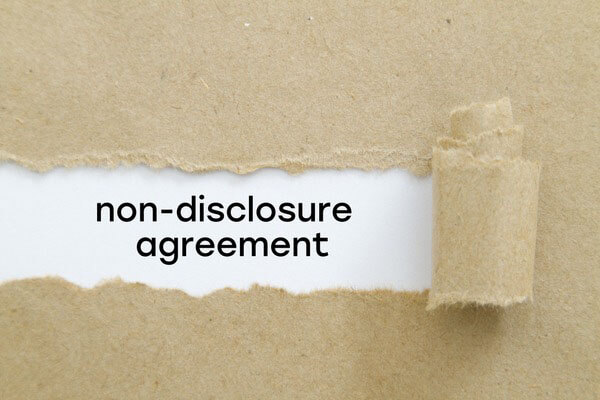"To keep your secret is wisdom; but to expect others to keep it is folly."
– Oliver Wendell Holmes

Thus the reason why a strong non-disclosure agreement (NDA) used consistently both internally (e.g. directors, officers and employees) and externally with third parties should be the cornerstone of any trade secret and intellectual property policy.
Even with the best of intentions, leaks of confidential information can occur. Unfortunately, once leaked, the confidential nature of a trade secret is difficult or impossible to restore and can result in real harm and devaluation of an entity's material asset. So a good NDA will:
- encourage compliance and non-disclosure by setting out clear and reasonable expectations with sufficient specificity that can guide operational practices, and
- promote efficient enforcement in the applicable jurisdiction in case of a breach.
The provisions of an NDA can be in the form of a stand-alone contract or part of a broader agreement or a company's business/employment policies and may be intended to cover parties in different jurisdictions. Yet there are some common considerations in drafting an NDA no matter the scenario.
By way of background, the Supreme Court of Canada set out three elements that courts should look for in determining a breach of confidence:
- that the information conveyed was confidential
- that the information was communicated in confidence, and
- that the information was misused by the party to whom it was communicated.[1]
So an NDA should help in showing that these elements are satisfied and that any disclosure of the information outside the terms of the agreement is misuse of the information. Although these three basic elements are common to many jurisdictions and scenarios, how to meet these requirements (and if there are any additional requirements) can vary depending on the parties to the agreement (e.g. employment contract or third party commercial agreement) and jurisdiction.
Here are our top five tips for creating an effective NDA
1. Consider the governing law
Consult legal counsel in the appropriate jurisdiction and understand the governing law before the contract is executed. Although there may be common elements in trade secret law between jurisdictions, requirements may differ, for instance, in the degree of specificity, reasonableness and even in formalities. Remember that although there may be common elements, the law governing trade secrets is not universally consistent.
2. State who owns the information
Ownership during and after the term of the contract should be set out clearly. Specify the steps that contracting parties must take to return and/or destroy the confidential information upon contract expiry or termination and set out the required timeframe for each step.
3. Define what information is confidential and how it can be used
The confidential information should be identifiable, avoid overbreadth and uncertainty. Remember that confidential information in all its forms should be included in the definition, including oral and written depictions. The allowable uses of the trade secret should be well defined and specific. The information that is shared should be limited to the information that is actually necessary to fulfill the stated purpose. This last point is important operationally, even when operating under an executed NDA.
4. Set out the operational requirements that will protect the information
Consider specifying what minimum conditions are adequate to protect the confidential information, including policy, environmental/physical and technological controls. In this regard, we recommend setting out who may have access to the information and for what purpose. With regard to technological controls, stating the minimum security and computer system requirements is also helpful. Operationally and legally, including the term (how long the parties are obligated to keep the "secret") is important. In many jurisdictions, this can be perpetual for as long the information is "confidential information". Ensuring it is clear what happens to the information on termination is also important (e.g. returned or destroyed).
Further, including an audit clause that can be exercised to verify that the specified measures are actually in place, a notification clause requiring prompt notification if a party becomes aware of any breach, and a remedy clause in case of breach are also good practices.
5. Context is key
In the event that judicial enforcement becomes necessary, providing context will assist the court to discover and give effect to the parties' true intention. Context can clearly set out why the parties are entering into the agreement and could form the basis for showing consideration (quid pro quo) that is necessary to enforce any agreement. This does not have to be extensive and can even consist of a single sentence. Providing context can:
- help define what information is confidential and provide support as to why it may be valuable to the disclosing party,
- confirm that the parties intended the information be kept confidential; and
- clarify the purpose for which the information can be used, so that any use outside the context or purpose is considered "misuse". Even if one uses a base NDA template, we would recommend reviewing and updating it to provide context of sufficient specificity. For instance, "the parties are entering this agreement to discuss a potential business relationship" may not be as useful to a court as "the parties are entering into this agreement for the purpose of discussing a potential mutually beneficial collaboration to commercialize product x".
Summary
A good NDA will be tailored to the specific information, parties and context. Consulting a legal professional can help ensure that all of the necessary elements are firmly in place and help protect the company's jewels.
With offices and associates around the globe, Gowling WLG is well positioned to assist our clients not only in Canada but also with their global endeavours. Please connect with your Gowling WLG IP professional or one of our teammates for more information.
[1] See Lac Minerals Ltd v International Corona Resources Ltd, [1989] 2 SCR 574 at para 10.